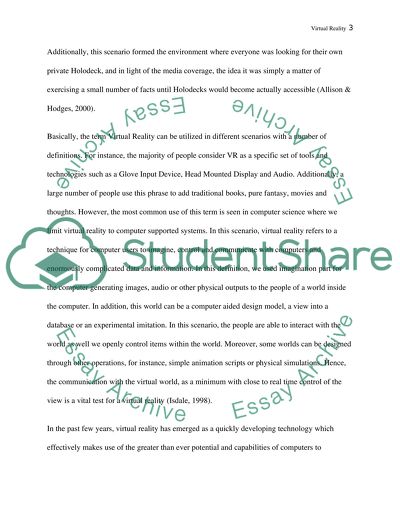Cite this document
(“Virtual Reality Term Paper Example | Topics and Well Written Essays - 1750 words”, n.d.)
Retrieved from https://studentshare.org/information-technology/1470547-virtual-reality
Retrieved from https://studentshare.org/information-technology/1470547-virtual-reality
(Virtual Reality Term Paper Example | Topics and Well Written Essays - 1750 Words)
https://studentshare.org/information-technology/1470547-virtual-reality.
https://studentshare.org/information-technology/1470547-virtual-reality.
“Virtual Reality Term Paper Example | Topics and Well Written Essays - 1750 Words”, n.d. https://studentshare.org/information-technology/1470547-virtual-reality.


